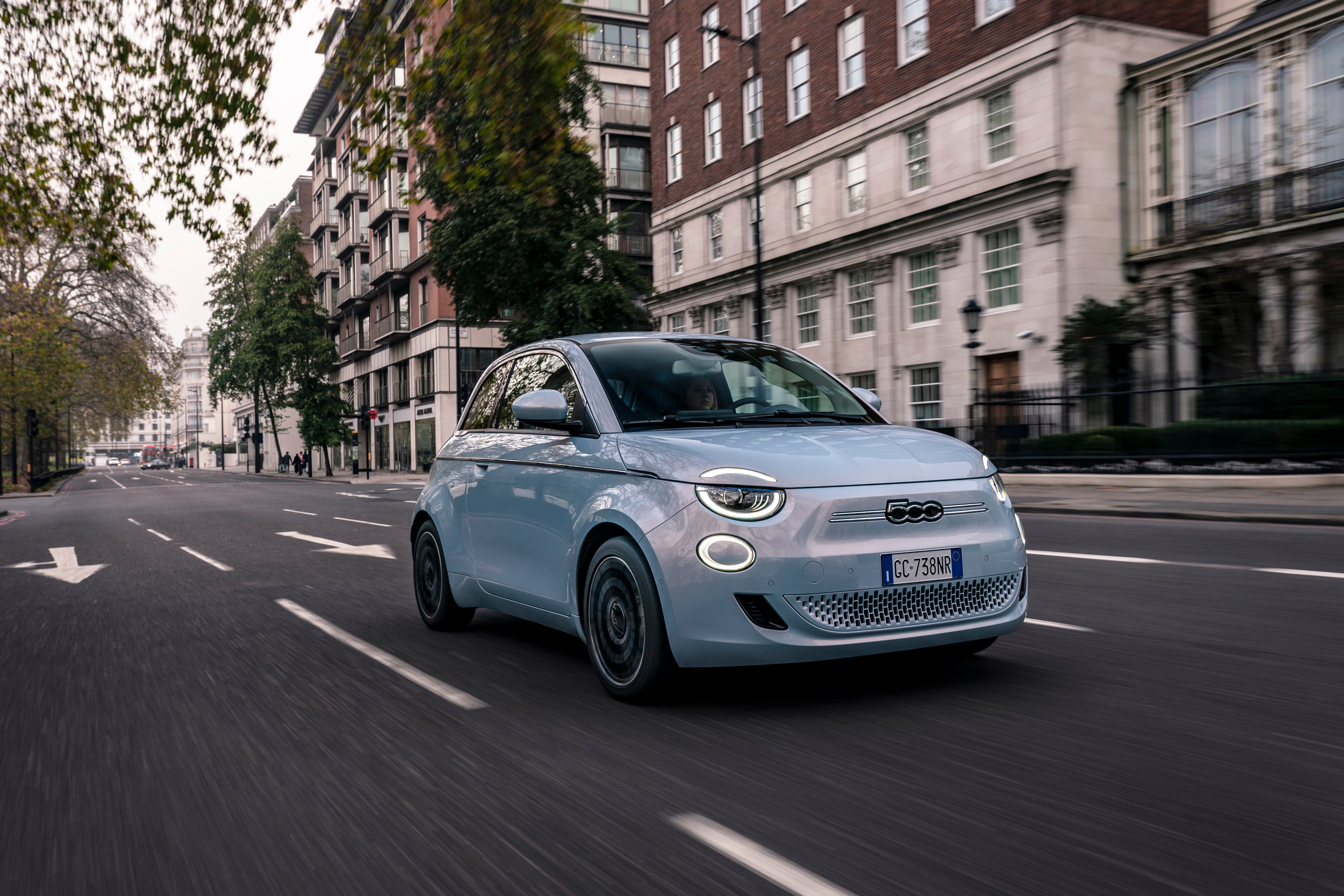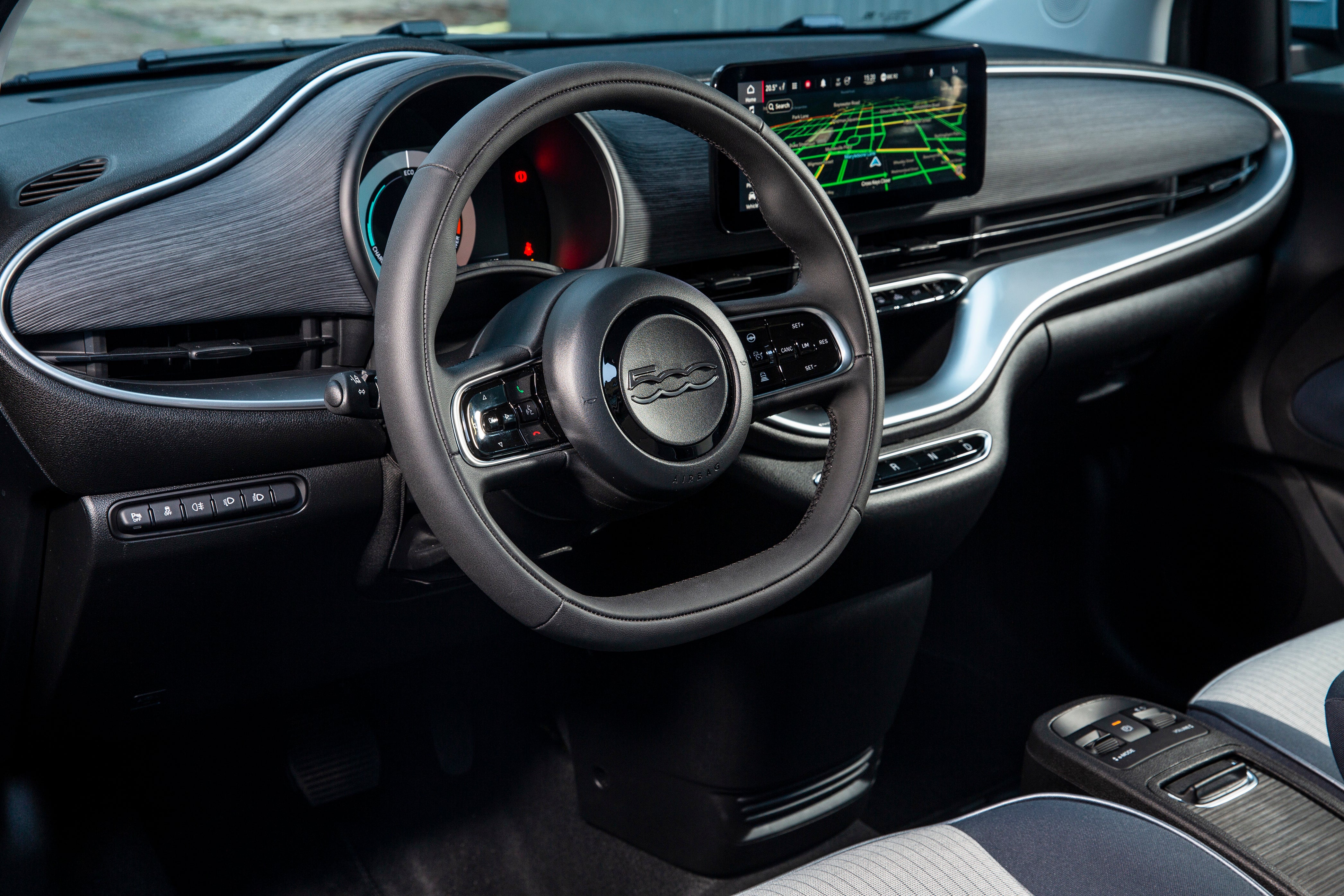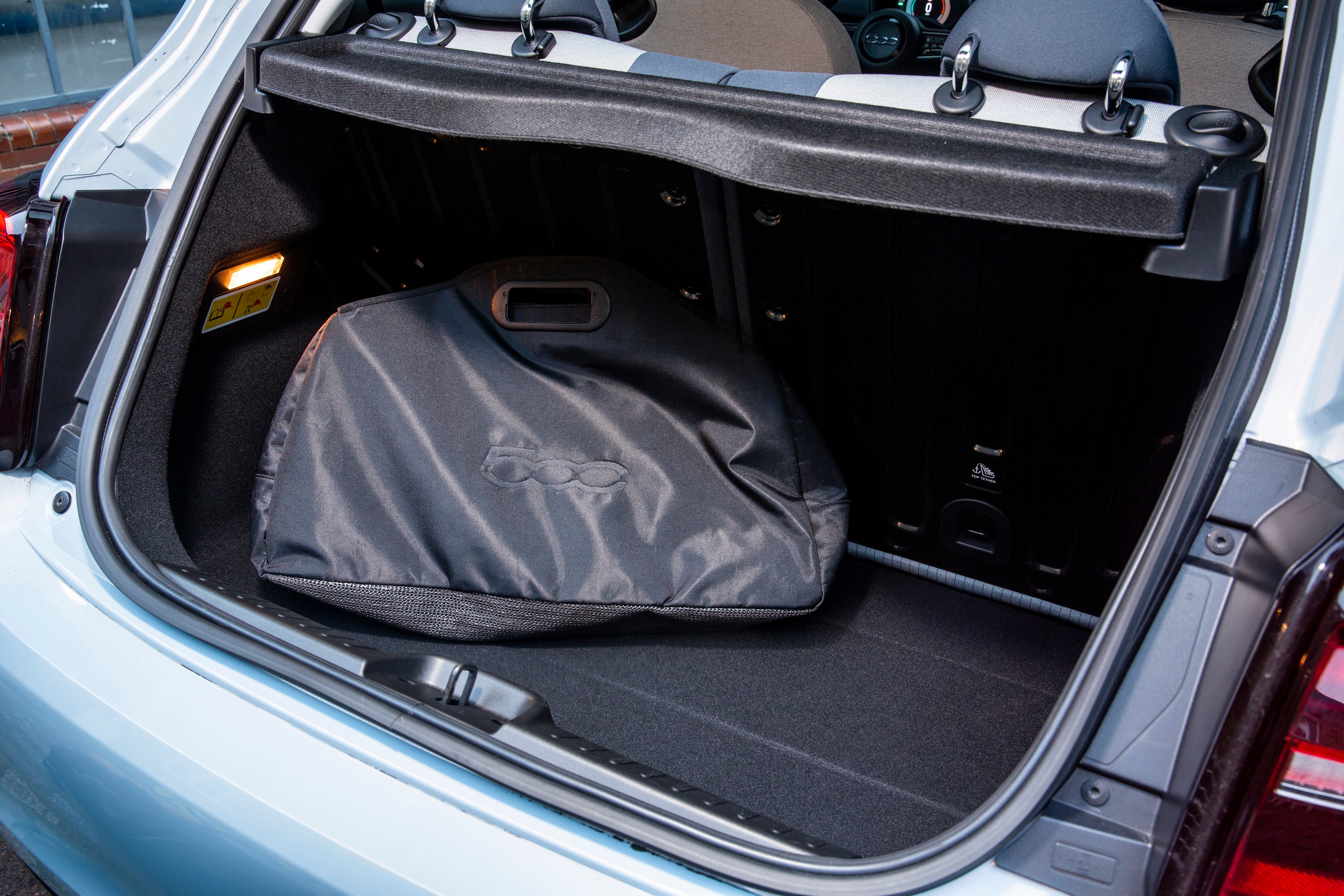Fiat New 500e: No diesel. No petrol. No hybrid. A turning point
What the Fiat 500e has retained as it’s gone electric only is the enjoyable way it drives, writes Sean O’Grady


Henry Ford famously said you can have any colour you like so long as it’s black. (Actually the black-only era only lasted a short time during the Model T’s long career, but you take his point.) Now Fiat is telling the world that you can have any new Fiat 500 you like, provided it’s electric. Yes, indeed. The future has arrived for the world’s cute little car of choice. The bambino is electric only. No diesel. No petrol. No hybrid. That’s it. A turning point.
Having said that… there is some choice with the Fiat 500. There’s a choice of battery packs, which give you an optimistic range of about 200 miles or 100 miles respectively, plus three trim levels, plenty of paint colours and accessory options and there’s even an expensive cabriolet (the only electric convertible vehicle thus far). Not only that, but the older Fiat 500 (this electric-only model is the Mark 3 of the current reimagining of the classic) does soldier on for the foreseeable future as a “mild” petrol-hybrid, which means the batteries and electric motor are strictly supplementary to the small petrol engine.
The “old” 500, though, really is old, because it dates back to 2007. By contrast the “Fiat New 500” as they call it, really is all-new. It’s even made in a different factory, in Turin now for the electric job, rather than in Poland (which always weakened the Italian credentials of the old car – the tricolore stripes and the like). Inside the new smart interior with its bright trim and big 10-inch screen, you’ll find mention of “Made in Torino” with the city skyline.
The new car is taller, longer and wider than its predecessors, with new bodywork, software and of course propulsion – even though Fiat has understandably opted to keep the distinctive looks because the customers love them and it’s a best seller for the company. But it could have opted to make it look like a fridge on wheels or a skateboard if it’d wanted, because electric power and battery storage, epically for city cars, open up all kinds of styling and design opportunities. Anyway, it’s small and appealing, as ever.

The thing the Fiat 500e has retained as it’s been electrified is the enjoyable way it drives. Perhaps because it’s relatively light and small, it drives much more like a conventional car than most electric vehicles and it’s extremely chuckable, and entertainingly so. Sadly, you don’t get the kind of gruff engine notes you get in the older petrol versions, nor the growl of the souped-up Abarth 500; rather a sort of “electric motor” drone is generated artificially, to meet EU rules and, to be fair, protect pedestrians.
The most adventurous – by which I mean foolhardy – feature on the New 500e is the electric button to open the door from the inside, just like you would open the boot on most modern cars. So they’ve done away with the traditional door handle, except that there’s an emergency one down at the base of the door trim, so you can never be trapped inside if the electrics start playing up, which, let’s face it, never, ever happens on an Italian car. So I do wonder quite how durable that particular innovation will prove. Getting in is even easier – it has keyless entry that senses your presence if you have the fob in your pocket, say.
THE SPEC
Fiat New 500e
Price: £29,598 (as tested; range starts at £23,995 inc grant)
Engine capacity: Single electric motor, front drive powered by 42kWh battery
Power (hp): 118
Top speed: 93mph
0-60mph: 9.0 secs
Fuel economy: 168mpg equiv
CO2 emissions: 0
The automatic gear box is controlled by a set of buttons on the dash rather than a lever between the seats or sprouting from the steering wheel, and they work fine. Very useful is the mode selector, which will radically alter your car’s range if you accidentally forget to charge it or otherwise run into trouble. In “Sherpa” mode it will limit your speed to 50mph, blunt the acceleration and turn the heating off so you have a better chance of limping home or reaching one of our still-sparse electric charging points. The Fiat will charge in about 4 hours from the wall-socket you’d have installed at home, or about half an hour from a commercial fast charger, of which I have found Chargepoint to be a good and reliable network.
Fiat says the average motorist will spend about £30 a month on fuel, but you really do need access to off-street parking for any electric vehicle to make sense. With luck you’ll get 230 miles out of a full charge in the bigger battery 500e, on a warm day and with careful town driving. With the “old” 500 mild hybrid you don’t really have to worry about running out of energy, or going out of style.

The big fact about the Fiat New 500e isn’t that it’s still nice looking, that it’s quite fun to be around or that it’s more refined than any small Fiat beore it (admittedly not a high bar): but rather that the premium for the electric version over the visually similar petrol model hybrid is some £10,000. Given that for most of its buyers it’s simply a fashion accessory, rather than some environmental statement, many customers will still favour the one with the internal combustion engine, and the factory in Poland will be kept busy making the old ones for some time yet.
As for rivals, there’s a growing pack of baby electric cars. At the budget end you’ll find the Volkswagen e-Up, still a practical and quality proposition, if a touch dated. For around the same price as a 500e, which is really best suited to a coupe, you could get a full-size, well-equipped estate, the MG5 SW, something of a bargain, while the Mini electric, Honda e and electric versions of the Vauxhall Corsa and Peugeot 208 are all capable but somewhat more expensive. The choice is there, but for many lower-mileage families the economics are sadly still against the greener option for personal transportation. You could always walk, I suppose.



Join our commenting forum
Join thought-provoking conversations, follow other Independent readers and see their replies
Comments